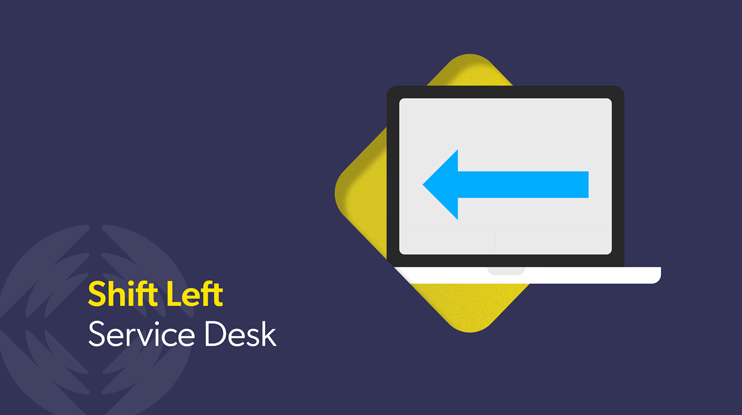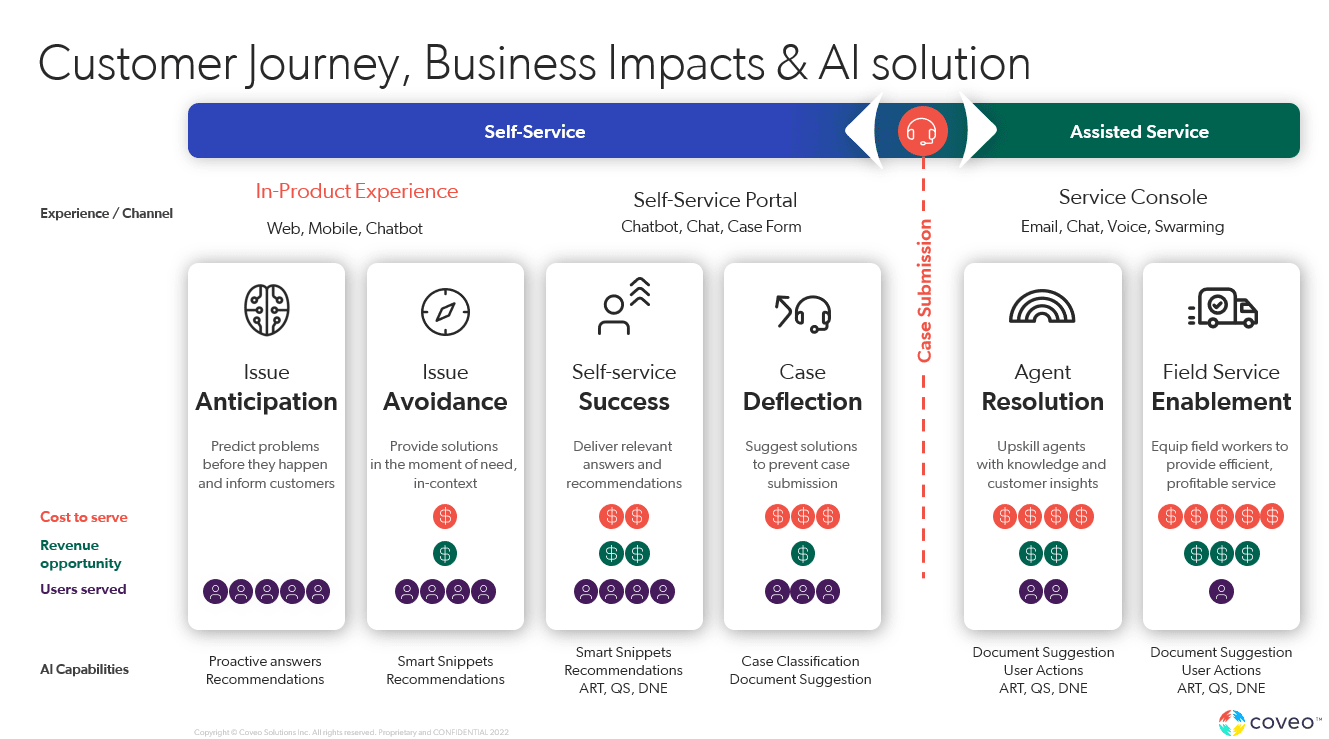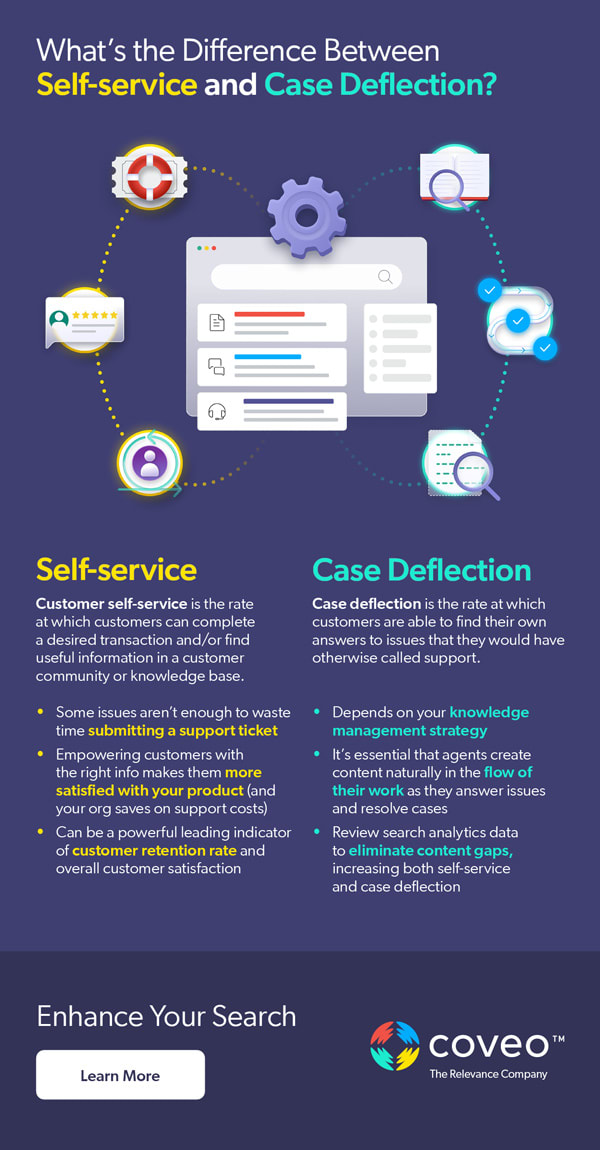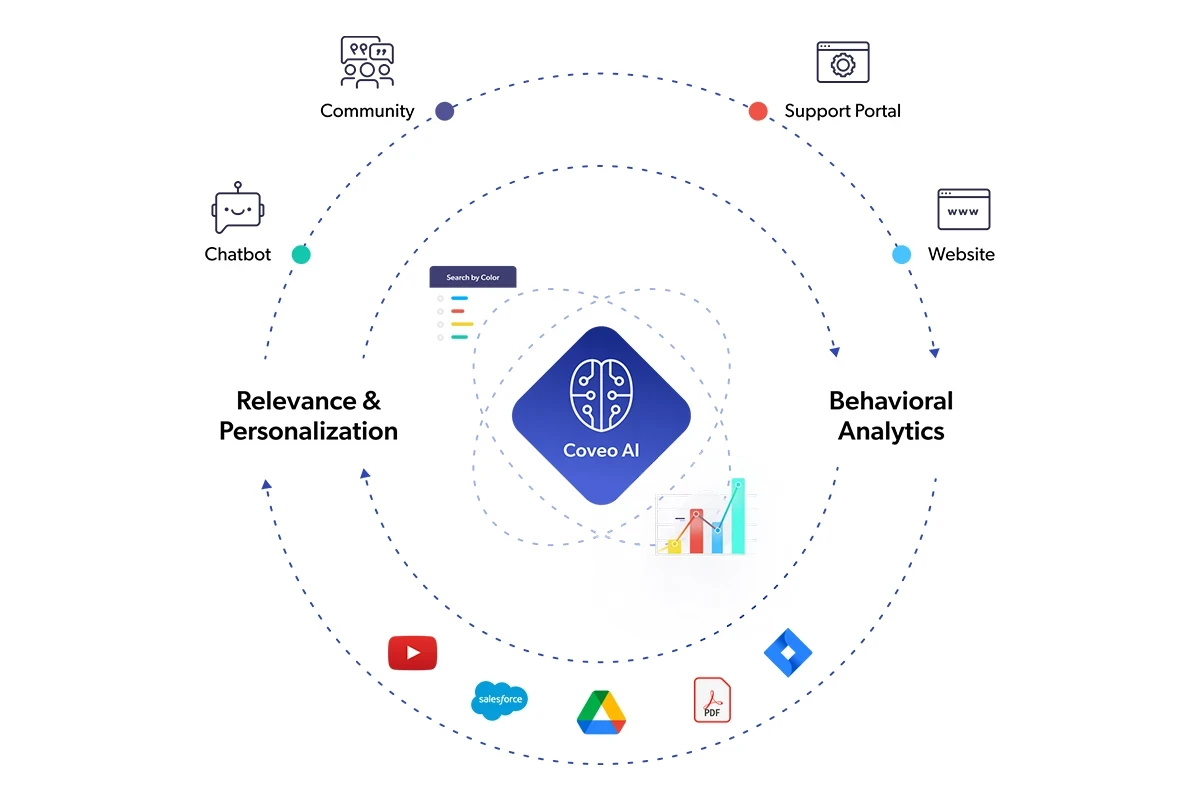Improving operational excellence and optimizing costs — these are customer service and support leaders’ top priorities for 2024, according to Gartner.
A “shift left” strategy — when and where appropriate, moving problem resolution to the end user — achieves both goals. You also might call this kind of strategy customer self-service. Shifting left reduces the time service teams spend helping resolve issues that customers could easily resolve on their own. It moves problem resolution as close to the end user as possible and away from costlier level 2 and 3 support tiers.
New technologies like artificial intelligence and machine learning make the shift left service desk strategy even more effective with tools that enable data-driven, personalized support. The goal with a shift left service strategy is to move resolution closer to the customer whenever appropriate. (Don’t worry, this is more often than you might think!)
Let’s discuss where “shift left” comes from and best practices for applying it to your own organization.
Understanding The Shift Left Service Desk Strategy
The term “shift left” comes from the DevOps world where it applies to early-stage testing and problem-solving. The idea is that continuous testing and deployment early and often prevents costly production outages or critical application failures down the line.
This proactive approach to DevOps becomes a constant feedback loop where developers use automation to continuously test, deploy, and provision new builds. By the time a build goes to production, most of the glitches are worked out, making production deployment much more successful.
The shift-left concept, adapted for customer service, focuses on moving problem resolution closer to the end user. It does this by equipping users with tools and information so they can resolve issues on their own. This reduces the burden on customer support teams and enhances user experience by providing immediate solutions.
Just as early testing in DevOps identifies and resolves issues before they escalate, the shift-left service strategy aims to improve customer success by shifting contacts from costly assisted channels to self-service channels. This is often also described as case deflection, which is different from customer self-service.
That could include providing comprehensive FAQs, self-service portals, and AI-powered tools like chatbots and intelligent search. Addressing concerns closer to the source improves resolution times, increases user satisfaction, and enables a more resilient and efficient support infrastructure.
Relevant Reading: Delight vs Satisfaction: What Has a Higher ROI?
Benefits of a Shift Left Service Strategy
Per Gartner, self-service adoption, and containment, along with knowledge management and insight, are top customer service business goals for 2024. Shifting left offers the following benefits in the context of these goals:
- Cost savings – Containment becomes more effective as more issues are resolved at the first point of contact or even pre-emptively. It means fewer escalations, leading to reduced operational costs and a more streamlined service process.
- User autonomy – A shift left approach empowers customers to resolve issues without escalating them to a live agent. The right tools, technology, and information fosters self-service adoption. They give customers the levers they need to resolve issues on their own.
- Knowledge centralization – And speaking of levers, creating a single, robust unified index from existing information repositories like your CRM and customer portal and making it accessible to both customers and staff is part of a shift-left service strategy. This strategy promotes consistent and accurate information dissemination which directly supports effective knowledge management.
- Proactive problem solving – Insights gathered from self-service interactions help you anticipate common issues so you can address them proactively. Tools powered by large language models like generative answering or smart snippets supercharge this approach by helping customers resolve issues using accurate and contextual responses based on past behavior and data.
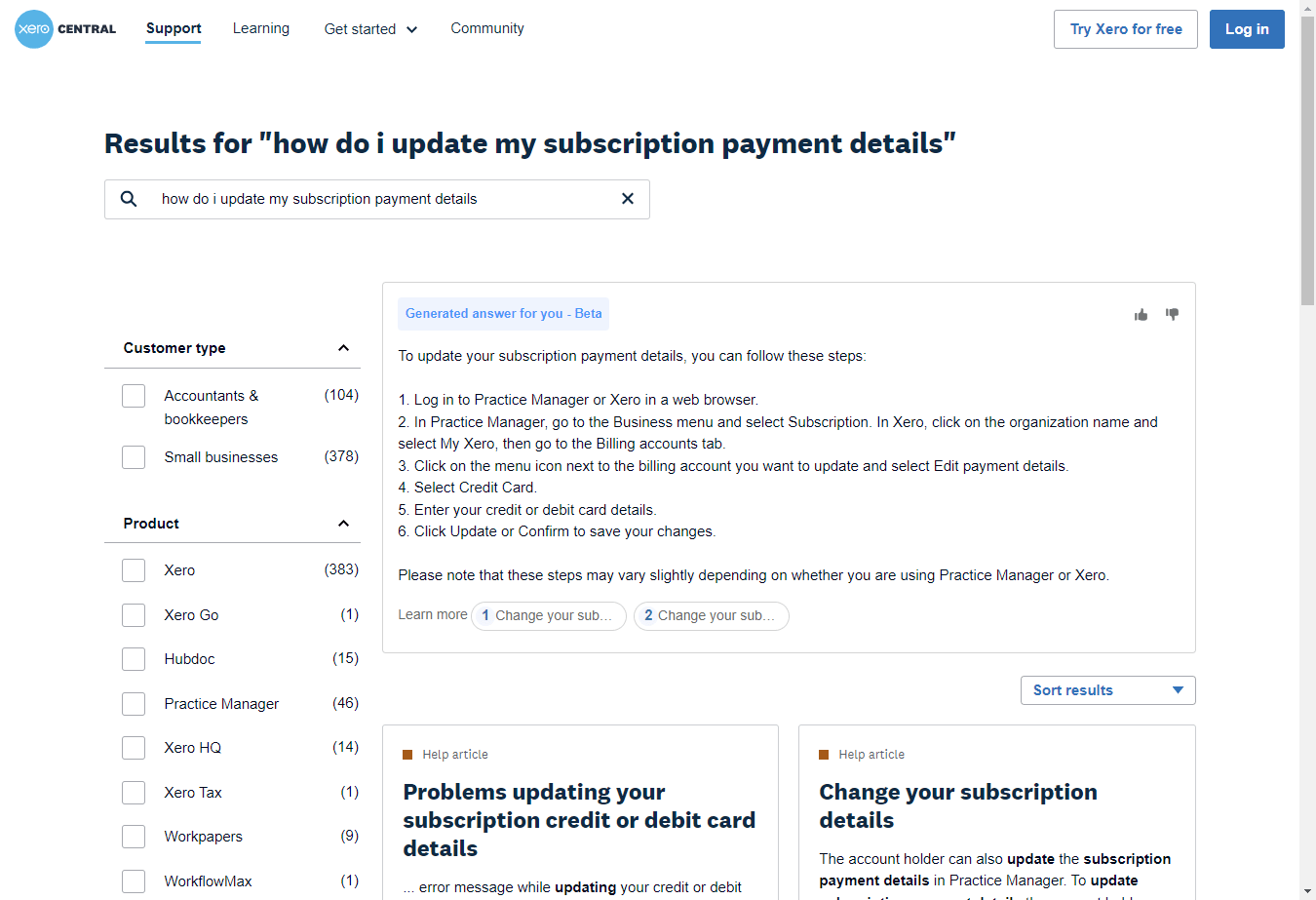
- Scalability & efficiency – Providing customers with self-service options allows you to handle a larger volume of queries without proportionally increasing your support staff. This also makes you more resilient and competitive since it keeps your customer service quality consistent as you grow.
- Continuous improvement – Insights gleaned from self-service interactions provide valuable data which can be continually analyzed to refine and improve your customer service process. This refinement is part of the shift-left feedback loop. It’s what drives end-user satisfaction and keeps you focused on maintaining your knowledge base.
Considerations for Building a Shift Left Strategy
Most businesses already have some of the elements needed to create an effective shift-left strategy, but there are some key ingredients required for optimal success. These include:
A commitment to change
Moving to a shift-left strategy requires recalibrating the way you approach your customer service infrastructure and strategy. It may involve investing in new tools, merging information from existing tools, and training or hiring new staff. The shift left service approach isn’t just about investing in a new platform or tool, it’s an organizational strategy that requires buy-in from leadership, management, and your service team.
An understanding of customer support needs
Know how your customers interact with support, their frequent issues and pain points, and their comfort level with self-service options. This gives you a baseline to build a shift-left strategy. Take the time to survey customers and speak with support agents so you can design a shift-left strategy that works for people on both sides of the support desk.
Relevant Reading: How athenahealth Empowers Agents Through AI Customer Support
The right technology
Shifting left requires a robust suite of self-service tools that enable automation and include the ability to unify your company knowledge so that it’s consistently retrievable from one location (i.e., that unified index we mentioned earlier). Other tools like AI-powered intelligent search, generative answering, and in-product assistance helps users find the right information quickly. Any new technology you invest in should be scalable and easy to integrate, so you won’t have to retool the entire system as your needs change and your business grows.
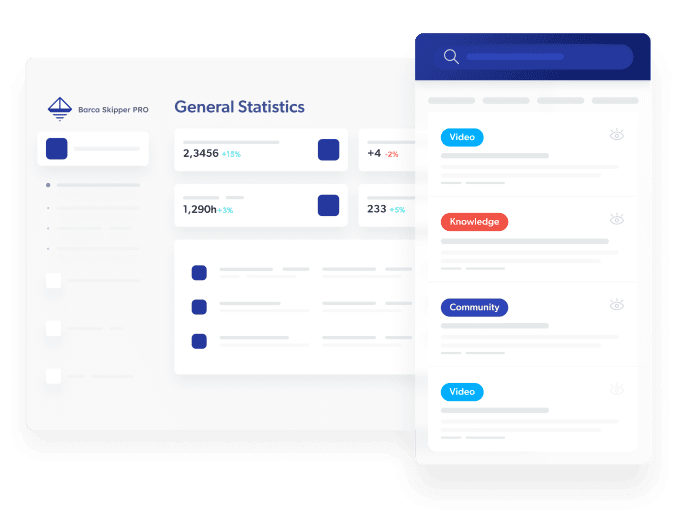
Consistent access to information
For a shift-left strategy to work, you need your company’s collective knowledge to be organized and accessible. Siloed and incomplete data needs to be cleaned up and unified so it can be easily managed, shared, accessed, and updated. This likely entails indexing content from different data sources and content repositories (there are a few ways to do this, so consider whether federated or unified best serves your company’s needs) so that your company’s information is easily searchable.
A knowledge management strategy
To maintain high quality and relevant information, you need a knowledge management strategy that prioritizes knowledge capture, distribution, and usage across your organization. This includes explicit, implicit, and tacit (expert) knowledge. Knowledge management serves as the backbone to customer self service because it emphasizes continually creating and updating content that supports common customer issues.
A well-equipped and trained support team
While the goal of a shift-left strategy is to empower customers to solve issues on their own, there are always issues that require agent assistance. It’s vital to equip your support team with the up-to-date training, the right tools, and (most importantly) information (including both product details as well as user actions) so they understand the nuances of the shift-left approach and can resolve issues quickly when a ticket is escalated.
An ongoing feedback loop
A shift-left strategy requires ongoing attention. Establishing a feedback mechanism to review your shift-left approach and knowledge management strategies allows you to identify gaps in knowledge and address customer roadblocks so you can make adjustments and refine your approach.
How AI Supports The Shift Left Service Desk
For Customers
Artificial intelligence supports a shift left service desk in a few important ways, but particularly in how it enhances customer self-service. Through machine learning, AI-powered search engines like Coveo surface the most relevant information to users, improving search functionality and reducing the user’s time spent hunting around for the correct answers.
It does this in a couple of ways including:
- Predictive search automatically detects user intent and surfaces relevant results. Once you’ve unified access to your data sources, the search engine can find the right content no matter where it lives.
- AI-powered search algorithms consider multiple dimensions beyond keywords to rank the search results (e.g., previous actions, search context, user information).
- The AI system extracts information from large pieces of content to answer question-based queries, then provides the answer in smaller chunks (e.g., smart snippets).
- It uses dynamic content filtering to automatically classify and reorder results based on the context of the search.
For Agents
When connected to a unified index of company information, AI-powered search also makes it possible for your service agents to find information with less context switching. We call this “swivel chair syndrome.” By embedding search interfaces directly in their flow of work, they get the answers they need quickly when an issue is escalated.
AI-powered chatbots and virtual assistants are also valuable customer self-service tools that can provide instant responses to customer queries and route customers to the most relevant content. They can connect a customer to the most appropriate human agent to resolve a given issue, which makes solving their problem easier from both the customer and agent perspective.
And, remember, AI gets better over time because of its ability to continuously learn. Unlike static systems, AI-driven tools evolve and improve based on past interactions. Every query, every feedback, and every interaction serves as a learning point for these systems.
Over time, this continuous learning ensures that the AI tools become more refined, accurate, and efficient, further amplifying the effectiveness of self-service channels. In essence, AI not only supports the shift-left strategy but propels it to new heights, ensuring that businesses can offer unparalleled support while optimizing operational costs.
Look Left When It Comes to Customer Service
A shift left strategy isn’t just for DevOps. It can help achieve these customer service and support goals (and more) by supporting self-service resolution, providing AI-assisted support, and helping customers solve issues and answer questions on their own.
Adding AI and ML into the mix makes a shift left strategy even more effective (we would argue that you can’t have a successful customer self-service approach without artificial intelligence). AI is a self-service enabler. It facilitates a more proactive, user-centric resolution process and automates many of the steps involved with analyzing, optimizing, and sharing information.
One of the byproducts of implementing a shift left service strategy is having a better handle on your company’s knowledge base. Providing adequate information to support self-service tools like website search and smart assistants requires a solid foundation of information. You need a centralized knowledge ecosystem that promotes consistency and accuracy.
If you’re thinking of implementing this approach, we encourage you to evaluate your current support strategy and consider how shifting left and incorporating AI can provide a better support experience for your customers.
Dig Deeper
Wonder what KPIs helped Salesforce drive self-service success — and put their company on the map? Sr. Director of Digital customer Success Nick Sweers sits down with us to discuss the three KPIs to focus on to establish yourself as an industry leader.


